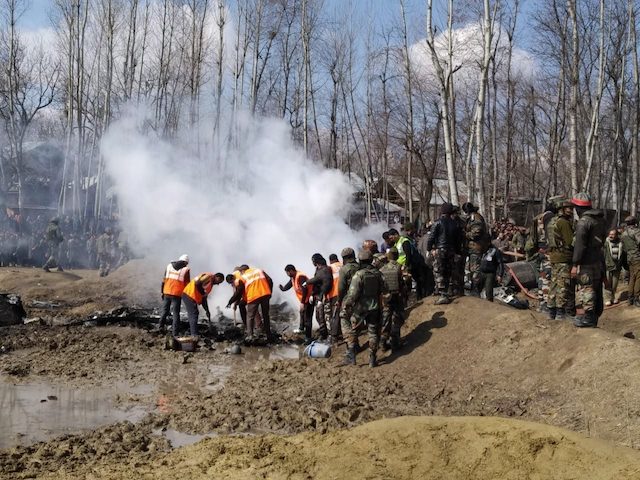Context
In the COVID-19 environment, the Asia Pacific region is increasingly an active theater. A number of inquiries are being contemplated on the role and policy of China as the world grapples on how to deal with the pandemic. Then there is the angle of how China was able to tackle the virus quickly while others are faltering? Thus perhaps indicating Beijing is the net beneficiary so far as others are being economically weakened.
The focus had shifted to the Pacific long before the arrival of Coronavirus. With a pre COVID-19 annual growth rate of more than 6% China has been on the trajectory to challenge the US for a while now. And that is the reason why substantial intellectual capital has been committed to devise approaches to counter its rise. These discussions have revolved around coexistence to competition, and containment.
During the Obama administration the emphasis was on economic collaboration with allies through trade deals like TPP (Trans-Pacific Partnership) and emphasis on the military Pivot to Asia. Under the American First doctrine, Trump quickly annulled TPP and increased economic pressure on China. On the other hand, the Pivot to Asia has morphed into the Indo-Pacific strategy.
And then there is the Belt and Road Initiative (BRI) that China has launched to reconfigure the world based on its vision and is perceived as highly threatening by the West. The scientific and technological advancement is another dimension of the risk, such as the next generation 5G technologies. The US is vehement in impressing upon its allies to avoid these Chinese technologies as that would create vulnerabilities for the western economic and security alliances.
Weakened America
The increasing tension in the Asia Pacific is a reflection of the COVID-19 related defense and security reassessments that different players are conducting. The perception that China was able to deal with the Coronavirus early on has reinforced the impression that it has emerged a little unblemished under the changing geopolitical and geostrategic context. On the other hand, the inept handling of the pandemic, followed by inter-racial riots has created an image that the US is imploding and losing its global preeminence and thus the American allies are recalibrating on how to position and place their bets, while other powers consider what a weakened and inward-focused America would mean for the world.
China-India Border Tensions
If it is assessed that the US has indeed been weakened by the Coronavirus, it represents an opportunity for other players to exert and test new scenarios. And this may be what has transpired on the China-India border as it relates to the broader disputed region of Kashmir. However, it was India that triggered the recent action-reaction cycle.
In August 2019 India revoked the special status of Jammu and Kashmir granted under article 370 and 35A of the constitution, and divided it into union territories of Jammu and Kashmir and Ladakh. Following the move, India sent additional troops and placed Jammu and Kashmir under complete lockdown, cut-off telecommunications and Internet, and jailed political leaders. India removed the ‘permanent status’ clause demonstrating it wanted to change the facts on the ground to bring about the desired outcome.
Since revoking the special status of Kashmir, Indian officials repeatedly made claims regarding Azad Kashmir or the Pakistan administered Kashmir, suggesting it was ready to tackle it head on. The neighbors of India wearily looked on these aggressive Indian actions, especially China. To them the message was clear; under the garb of Quad and its strategic alliance with the US, India was trying to change the status of these border disputes in violation of previous treaties and historical understandings.

Why is India Provoking its Neighbors?
The question arises, why is India acting rashly? The nation has recently suffered a series of humiliating setbacks to economically and militarily punish Pakistan for its role in Kashmir.

In February 2019, India claimed to have carried out a preemptive attack inside Pakistan while destroying the terrorist training camp located there. This was after it blamed Pakistan for the Pulwama attack. International media widely discrediting the Indian claims that any such camp was hit in Balakot. Subsequently, the Modi government continued the jingoism even in the face of a dogfight with Pakistani jets that resulted in two Indian fighter planes crashing and a pilot being captured.

Before this escalation, in 2016 India claimed to have carried out surgical strikes, a term usually reserved for the US in its campaign against extremism, on Pakistan’s side of the Kashmir. These claims were mostly unverifiable. India attempts to link instability on its side of Kashmir with Pakistan supported terrorism, while Pakistan claims it to be a locally supported insurgency against Indian brutality – and recognized by UN as the unsettled business of the 1947 partition.
New Delhi has also been unable to globally isolate and economically marginalize Pakistan, though it made inroads to put distance between Pakistan and its traditional support emanating from the Gulf States. However, Pakistan was mostly able to counter that via China-Pakistan Economic Corridor (CPEC), a major tributary of the BRI. Moreover, despite considerable efforts India was unsuccessful in diminishing the centrality of Pakistan in the Afghan peace process.
All of this is pushing India towards riskier steps and behavior– example being the disastrous step of revoking the special status of Jammu and Kashmir that possibly led to the deadly June 15th skirmishes in Galwan Valley with China.
Indian Strategic Narrative and China
As events unfold, Indian strategic narrative is being revealed. It portrays the border skirmishes with China as a consequence of its brazen regional and global policy, which includes Hong Kong and Taiwan. India attempts to link the cause of the clashes with China with the raison d’être for the Indo-Pacific strategy and Quad alliance, which includes US, Japan, and Australia. While this may benefit the full stake membership of India to the Quad, it will make Indian economic outlook less diversified while firmly pegging its dependence.
For China it is hard to understand why India would continue to undermine its interests while they have considerable convergences. India and China have significant economic stakes with bilateral trade expected to cross $100 billion in 2020. More importantly, they both are members of the club of emerging nations known as BRICS (Brazil, Russia, India, China, and South Africa). India, like Pakistan, is also now a full member of the China and Russia dominated SCO (Shanghai Cooperation Organization).
Despite the convergences, India rattled China by toying with the idea of supporting Taiwan for an observer status in the World Health Organization (WHO) in May. New Delhi has also been contemplating linking Chinese support for Kashmir in the Security Council to lending more support for Taiwan and challenging the ‘One-China’ policy. Moreover, India has backed calls for WHO to investigate Chinese role in the spread of Coronavirus.
And thus, just like in the US Coronavirus related vilifying of China has impacted the Wall Street and started a larger debate about reorienting the supply chains India may be heading in the same direction leading to internal polarization regarding its future outlook.
In changing the status of Ladakh, India miscalculated and seriously provoked Beijing. While India has played macho on border disputes with smaller neighbors like Pakistan and Nepal, China is a different ball game altogether. The Israeli style annexations only work when there is no big party with direct involvement in the conflict. Through its unilateral action on August 2019, India has linked LOC with LAC like never before, and for this it has no one else to blame. In the aftermath of the present border skirmishes, India may question the efficacy of the Quad alliance and the significance of Russia is likely to be escalated, which Putin will surely leverage against the US. According to the media reports, President Trump is likely to invite Russia, including India, Australia, and South Korea, to the expanded G7 meeting in September. Trump has proposed extending the grouping to G10 or G11 for dealing with China. President Trump revealed his intentions to invite Russia after Angela Merkel had declined to attend the G7 meeting mentioning Coronavirus concerns. Canada and UK have also resisted the inclusion of Russia. It’s also questionable if Russia would want to play any role to counter China when it’s one of its closest strategic ally.





